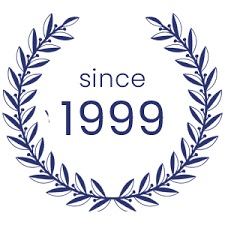FAQ is an abbreviation for Frequently Asked Questions or Concerns; however, the format is a question in a list of questions and answers intended to help understand a particular subject related to our products.
WELDING ROTATORS
- What is the advantage of Conventional Welding Rotators? They have the same load and rotation Capacity on all their vessel diameter ranges. A disadvantage of Self-Aligned Welding Rotators: The load capacity reduces when the vessel sits only on the bottom wheels of the roller
- What is the advantage of Self-Aligned Welding Rotators? They adjust to vessel diameters within the Roller’s Self-Adjusted Zone, avoiding downtime. SAR rollers also provide a better weight distribution because of their eight wheels. A disadvantage of Conventional Welding Rotators: The distance between wheels (center to center) is manually adjusted by nuts and bolts; therefore, there is downtime every time the vessel diameter changes. A re-torque is required.
- How do you select a Welding Rotator for a workpiece with concentric loads? Select a welding rotator that fits the load and rotation capacity of the rollers. The workpiece must be at most 30 m in length.
- How do you select a Welding Rotator for a workpiece with eccentric loads? Add a counterbalance or contact Irizar technicians; they will help you choose the appropriate welding rotator for your application.
- How do you rotate a workpiece from 30 to 60 m? Use two power rotators and a synchronized device.
- How do we increase load and rotation capacity? Increase load and rotation capacity by 100% by adding an extra set (power rotator & idler rotator) and a synchronized device. It is valid only if the workpiece does not exceed the roller's capacity.
WELDING MANIPULATORS
- How do we select a Welding Manipulator?
- Boom vertical expansion should be higher than the vessel diameter most significant for welding.
- Maximum load at Boom extremity will not exceed the rated range
- The shop overhead crane should be higher than the column height
- What are the features of the Irizar Manipulator?
- Boom expansion (in-out): Motorized with variable speed from 0.12 to 1.20 m/minute
- Boom lifting (up-down): Motorized
- Column Rotation ± 180º: Motorized
- Trolley (Base): Motorized with a translation speed of 1.5 m/minute
- Boom anti-fall safety device
- Trolly anti-fall safety device
- Remote control box 12 m cable: Included
- Wireless control: Optional
- Flux Recovery System: Optional
- Manual or motorized cross slide: Optional
- Seam Tracker: Optional
-
Does Irizar provides the WPS & PQR? No! We do not offer. The user is solely responsible for certifying WPS & PQR before deploying the equipment at the job site. A professional welding engineer should design [considering the applicable Code and Standards] by selecting the essential welding parameters such as plate beveling, wire and flux specifications, amperes and voltage, welding speed, etc.
-
Does Irizar provides the training? No! We do not provide. Irizar Welding Manipulator must be operated by an experienced user's submerged arc welding operator with an updated ticket. The Welder Qualification Test (WQT) remains the user’s responsibility.
TANK JACKING EQUIPMENT
- What is the appropriate jack model and the number of jacks required for safe lifting? Our company has developed unique and sophisticated software to determine the number of jacks needed to guarantee the tank lifting stability to withstand the tank lifting, snow, wind, and seismic loads for a particular construction site. Before lifting a tank, contact us, and we will provide a Tank Lifting Certificate.
- Does the lifted tank fall or slide if the power pack fails or the electric power shuts down? No! Since the tank is lifted hydraulically and held mechanically. After the tank is lifted, the power pack shuts down. Does the lifted tank fall or slide if a hydraulic hose breaks? No! If it occurs after lifting, the power pack shuts down, so the hoses have no pressure. If the hose brakes occur during lifting, the hydraulic force ceases (stop), and the Jack' Grip Jaws hold the tank weight mechanically in the current position.
- Can the existing tank jacking equipment be expanded to increase lifting load capacity? Yes! The system can expand by adding extra jacks. Maybe a larger power pack is required. Can a jacking system be split to erect smaller tanks? Yes! The system may split by adding power packs.
- How many jacks of 12 MT can take the Power Pack? Max 34 jacks with a 10 HP power pack; Max 65 jacks with a 20 HP power pack; Max 115 jacks with a 40 HP power pack; Max 150 jacks with a 60 HP power pack. All power packs come with electric motors.
- How do you prevent the lifting or lowering of a tank from being uneven? Power packs include an alarm to provide a tank lifting precision of ± 1".
- Is it helpful to use wireless control on the power pack? Yes! Wireless reduces labour; only one operator can lift or lower the tank.
- Can the Power Pack work at -30 degrees Celsius? Yes! It can work with the appropriate oil and firing the oil heater.
- Is it recommended to use quick couples on the hoses? Yes! Couples prevent oil leaks while testing, assembling, or disassembling the jacking system. Oil spilling is penalized at the sites.
- Are the Jacks tested? Yes! They are tested with a UTM (Universal Testing Machine). A testing certificate is provided for each order.
- Is training available? Yes! We train customer personnel in our Canadian facility or through remote video conferences. Operators get a Training Certificate valid for six months.
- Is the Operation Manual available? Yes! It is revised every six months and provides updates on safety procedures.
AUTOMATIC GIRTH WELDERS
- Is the Girth Welder Model AGW-1 (single side) compatible with the Traditional Construction Method (Bottom to Top) and Tank Jacking Construction Method (Top to Bottom)? Yes! It is compatible with the Traditional Construction Method, applying circumferential SAW (Submerged Arc Welding) seams INSIDE or OUTSIDE the tank while driving hanging on its upper edge. It is also compatible with the Tank Jacking Construction Method (Top to Bottom), which applies circumferential SAW seams ONLY from the OUTSIDE of the tank while driving on a temporary rail. For welding circumferential seams from the INSIDE of the tank, use a Girth Welder Girth Welder Model AGW-1-C.
- Is the Girth Welder Model AGW-1-C (single side) compatible with the Tank Jacking Construction Method? Yes! Compatible with the Tank Jacking Construction Method (Top to Bottom). Apply circumferential SAW (Submerged Arc Welding) seams ONLY from the OUTSIDE of the tank. It drives on a 1/2" x 4" flat bar hanging on brackets.
- Is the Girth Welder Model AGW-2 (double-sided) compatible with the Tank Jacking Construction Method? No! It is used only in traditional methods, where SAW seams are simultaneously applied inside and outside.
- Does Irizar provide the WPS & PQR? No! We do not offer. The user is solely responsible for certifying WPS & PQR before deploying the equipment at the job site. A professional welding engineer should design [considering the applicable Code and Standards] by selecting the essential welding parameters such as plate beveling, wire and flux specifications, amperes and voltage, welding speed, etc.
- Is training available? No! We do not provide training. Girth Welders must be operated by an experienced user's submerged arc welding operator with an updated ticket. Our company has available a rental facility to become familiar with our tank welding equipment and obtain the samples to qualify for the Welding Procedure Specifications (WPS), Procedure Qualifications Records (PQR), and Welder Qualification Test (WQT).
- The user should provide a steel-base plate with beveling, wire and flux.
- A minimum rental of five business days in an eight-hour shift is required. The rental includes two AGW-1-C and one SAW Welding Tractor.
- Maximum two operators at a time and one supervisor
- Booking: Two to four weeks in advance
- The user is requested to provide a certificate of liability insurance, adding our company as an additional insured per the customer policy.



